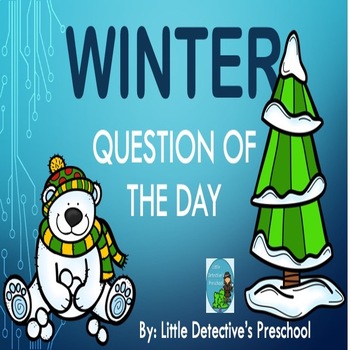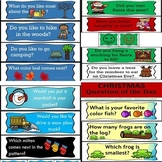Winter Question of the Day
- PDF
Also included in
- This question of the day bundle includes 144 questions related to Back to School, Fall, Christmas, Winter, Spring, and Summer. Children can learn graphing, counting, patterns, and increase their speech and language skills. Questions included in the bundle areWould you like to ride in Santa's sleigh?Price $14.50Original Price $22.00Save $7.50
Description
Winter Question of the Day includes 18 questions to enhance community in circle time and helps children recognize numbers, patterns, graphing, and counting. Cut out the cards and have children come up and answer the question. Using small fun shaped mini notepads with children's names on them and attach a magnet to the back to help children reinforce name identification.
Follow this store by tapping this STAR so you can get new freebies delivered right to your inbox as well as be notified of sales for products you have your eye on!
Similar products you may enjoy are listed here.
Thank you for your purchase!
Back to School Question of the Day
Whole Year Seasonal Question of the Day Bundle which includes Summer, Winter, Spring, Back to School, Fall, and Christmas Question of the Day all in one set.






